Today I was able to take part in a living inquiry where I was able to discuss a variety of inquiry topics with other teacher candidates. I always appreciate an opportunity to brainstorm with others and learn what they have experienced, it really helps me grasp my own topic better.
The first group I met with discussed the topic of Inquiry Based Learning where I met with people who had a variety of topics, all relating to inquiry in the classroom. My main takeaway from this group was the fact that in order to expect meaningful inquiry from our students, we need to be willing to take the time to teach them how to ask meaningful questions. Students may come to us with curiosities, but teachers are the ones who need to show them how to explore their questions in a way that really benefits them and their learning.
The second group I met with discussed Active Learning, in this group we tried to talk about why we had an interest in active learning through play and experience. We had a fairly common consensus that we wanted to incorporate meaningful, hands on, active learning because our students are sitting and often disengaged for a large part of the day. When our bodies are active, our brains are active, we are having fun and almost tricking ourselves into learning. I am really interested in making play time/centres more meaningful. I am looking forward to creating a centre where my students can explore current themes and topics at a fun and informal level. Having discussions of them as they explore and assessing their learning in as an observer. I think that by doing this, as a teacher, I will gain a better understanding of the concepts they are grasping.
I find having discussions helps me see a variety of points of view as well as share some ideas and resources I have found. We learn a lot through discussion, we see this with our students and I feel that it is important to practice what we preach. I am looking forward to exploring my new ideas further and am hopefully able to add a few new tools to my teacher toolbox.

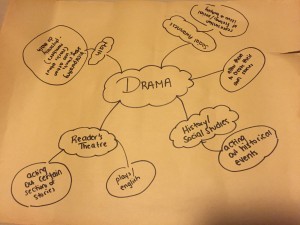
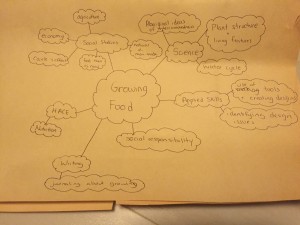 up with some great cross-curricular ideas for how to implement each topic. The purpose of this exercise was to show that it is possible to incorporate the interests of our students into our teaching topics while still meeting expectations set by the ministry.
up with some great cross-curricular ideas for how to implement each topic. The purpose of this exercise was to show that it is possible to incorporate the interests of our students into our teaching topics while still meeting expectations set by the ministry.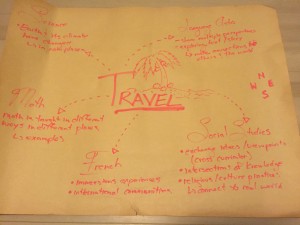 For this workshop I think that I expressed my objectives and expectations clearly and the group was receptive to my activities. I wanted to make the workshop as hands on as I could since I am encouraging creative thinking. I think that I managed my time well and allocated enough time to each activity. I did not get the feeling that people felt rushed during their Think Pair Share, I think we were able to hear from a large number of people who wanted to share. As I mentioned, I wish I had more time to get into the topics and curriculum activity, but I think that the 15 minutes allocated was enough for everyone to get a sense of the possibilities. I also decided to use a survey created on surveynuts.com and I used Prezi to create a visual presentation, I had never used either of these tools before, and wanted to challenge myself by exploring new tools. I think they both worked well and that my message was received by the participants. Something else I have been working on is my teacher to student talk ratio, I wanted to give the group more time for peer to peer discussion rather than hear me give another presentation on my inquiry topic. I am overall very pleased with how my workshop unfolded, the only critique I have is that I perhaps should have selected either the Think Pair Share OR the topics and curriculum activity to focus on. This may have allowed us to gather some deeper meanings and opinions, however, I think they worked well together and provided some good pre-thinking time and activity time.
For this workshop I think that I expressed my objectives and expectations clearly and the group was receptive to my activities. I wanted to make the workshop as hands on as I could since I am encouraging creative thinking. I think that I managed my time well and allocated enough time to each activity. I did not get the feeling that people felt rushed during their Think Pair Share, I think we were able to hear from a large number of people who wanted to share. As I mentioned, I wish I had more time to get into the topics and curriculum activity, but I think that the 15 minutes allocated was enough for everyone to get a sense of the possibilities. I also decided to use a survey created on surveynuts.com and I used Prezi to create a visual presentation, I had never used either of these tools before, and wanted to challenge myself by exploring new tools. I think they both worked well and that my message was received by the participants. Something else I have been working on is my teacher to student talk ratio, I wanted to give the group more time for peer to peer discussion rather than hear me give another presentation on my inquiry topic. I am overall very pleased with how my workshop unfolded, the only critique I have is that I perhaps should have selected either the Think Pair Share OR the topics and curriculum activity to focus on. This may have allowed us to gather some deeper meanings and opinions, however, I think they worked well together and provided some good pre-thinking time and activity time. What do we think about when we imagine a classroom the promotes creative thinking? Providing an environment where students are free to think, problem solve and create can be difficult for teachers to accomplish. Many teachers are accustomed to the “traditional” classroom, one where students work at there desks, whiteboard up front and scheduled times for exploration and play. We need to provide our students with an environment where they can learn in a way that best suits them. How do we do this? Something that I think is important to be excited about what our students are interested in, in order for them to persue a topic they will still need us as their guide. We are still required to assess their learning, and assist them when they struggle. It is not necessary for us to be experts in every topic just in case a student has a particular interest. We do need to be willing to join them on their learning journey and show them that we are excited about the process. This will show them that regardless of the outcome of a project, learning is still taking place, students will build resiliance and perhaps strengthen their interest of a topic.
What do we think about when we imagine a classroom the promotes creative thinking? Providing an environment where students are free to think, problem solve and create can be difficult for teachers to accomplish. Many teachers are accustomed to the “traditional” classroom, one where students work at there desks, whiteboard up front and scheduled times for exploration and play. We need to provide our students with an environment where they can learn in a way that best suits them. How do we do this? Something that I think is important to be excited about what our students are interested in, in order for them to persue a topic they will still need us as their guide. We are still required to assess their learning, and assist them when they struggle. It is not necessary for us to be experts in every topic just in case a student has a particular interest. We do need to be willing to join them on their learning journey and show them that we are excited about the process. This will show them that regardless of the outcome of a project, learning is still taking place, students will build resiliance and perhaps strengthen their interest of a topic.
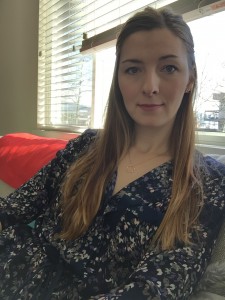 When people ask me why I want to be a teacher, the answer I give is not as complicated as it could be, I tell them that I want to be a teacher because I am an eternal student. My background in the sciences has provided me with curiosity that I feel transfers well into the world or teaching. I grew up as a prairie girl in Winnipeg, Manitoba but had opportunities to move around the world through my fathers job in the airforce. I have had many experiences that I value and which have led me to where I am today. I have learned a lot through travel, and it has provided me with an open mindset that I hope to bring to the classroom.
When people ask me why I want to be a teacher, the answer I give is not as complicated as it could be, I tell them that I want to be a teacher because I am an eternal student. My background in the sciences has provided me with curiosity that I feel transfers well into the world or teaching. I grew up as a prairie girl in Winnipeg, Manitoba but had opportunities to move around the world through my fathers job in the airforce. I have had many experiences that I value and which have led me to where I am today. I have learned a lot through travel, and it has provided me with an open mindset that I hope to bring to the classroom.
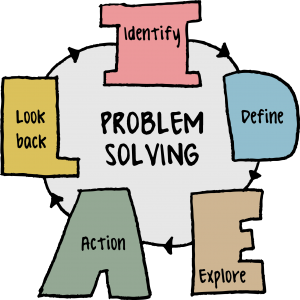 Juan was in a difficult situation and used problem solving skills to solve his problem. Creativity
Juan was in a difficult situation and used problem solving skills to solve his problem. Creativity